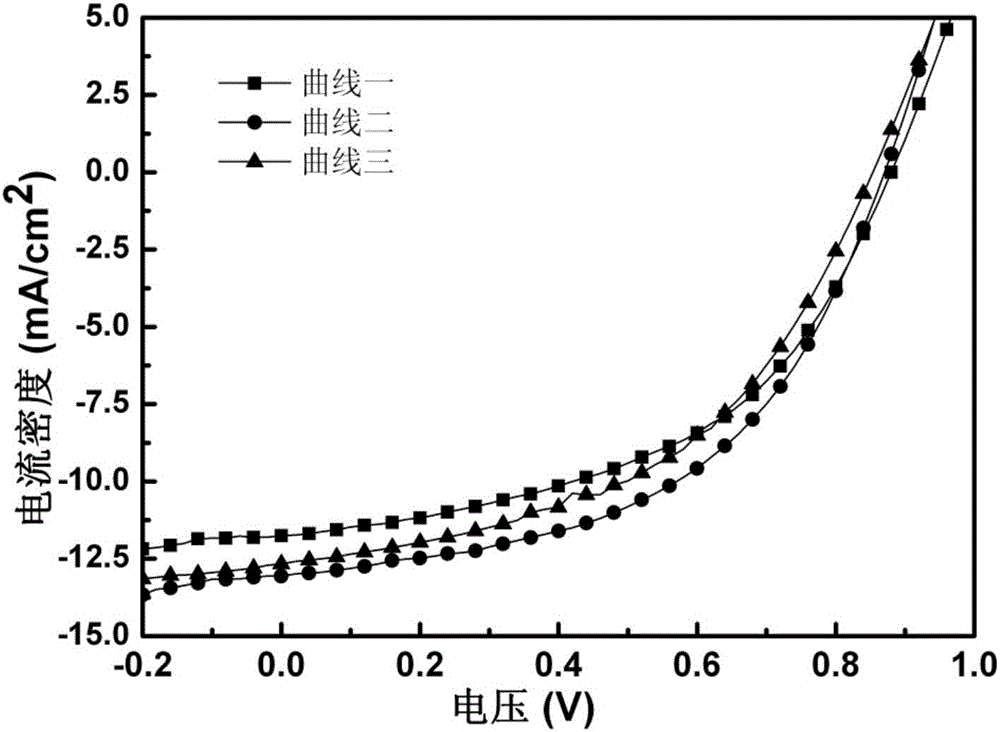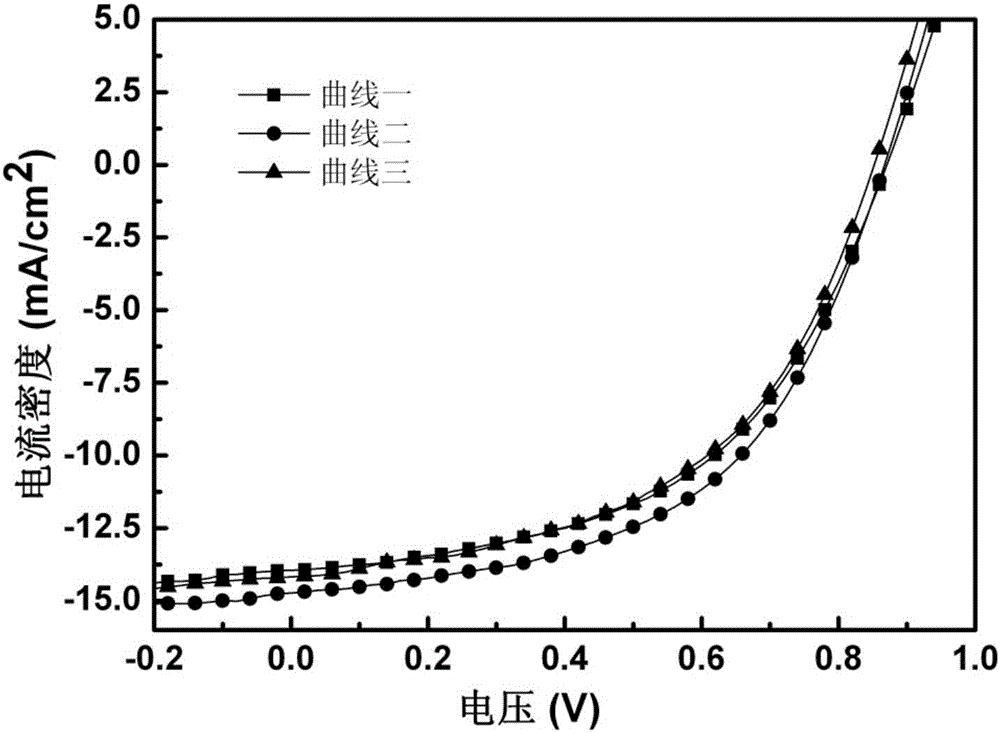Inverse type polymer solar cell based on modification of active layer and transmission layer and preparation method of solar cell
A technology of solar cells and active layers, applied in the field of polymer solar cells, can solve the problems of restricting the commercial application of polymer solar cells, low energy conversion efficiency, low spectral utilization rate, etc., achieving simple and convenient operation, improving transmission balance, Enhance the effect of charge transport
- Summary
- Abstract
- Description
- Claims
- Application Information
AI Technical Summary
Problems solved by technology
Method used
Image
Examples
Embodiment 1
[0032] (1) Put a 15mm×20mm ITO conductive glass into a beaker, and ultrasonically clean it with acetone, absolute ethanol, and deionized water for 15 minutes in sequence, and dry the cleaned substrate with a nitrogen gun, and put it in a petri dish for use;
[0033] (2) 10mL of Ti(OC 4 h 9 ) 4 Add dropwise to 90mL of absolute ethanol, then add dropwise 10mL of glacial acetic acid, and magnetically stir for 40min to obtain a uniform and transparent light yellow solution; then add 10mL of acetylacetone, stir for 30min, then add 10mL of deionized water at 3mL / min Slowly added dropwise to the above solution at a rate of 1 hour, and continued to stir for 1 hour to obtain a uniform and transparent light yellow sol, which was left to age for 7 hours, and the prepared TiO 2 Sol;
[0034] TiO 2 The sol was spin-coated on a clean ITO glass surface at a spin-coating speed of 3000rpm; 2 Put the ITO conductive glass of the sol into a muffle furnace, bake it at 450°C for 2h, then turn ...
Embodiment 2
[0042] (1) Put a 15mm×20mm ITO conductive glass into a beaker, and ultrasonically clean it with acetone, absolute ethanol, and deionized water for 15 minutes in sequence, and dry the cleaned substrate with a nitrogen gun, and put it in a petri dish for use;
[0043] (2) 10mL of Ti(OC 4 h 9 ) 4 Add dropwise to 90mL of absolute ethanol, then add dropwise 10mL of glacial acetic acid, and magnetically stir for 40min to obtain a uniform and transparent light yellow solution; then add 10mL of acetylacetone, stir for 30min, then add 10mL of deionized water at 3mL / min Slowly added dropwise to the above solution at a rate of 1 hour, and continued to stir for 1 hour to obtain a uniform and transparent light yellow sol, which was left to age for 7 hours, and the prepared TiO 2 Sol;
[0044] TiO 2 The sol was spin-coated on a clean ITO glass surface at a spin-coating speed of 3000rpm; 2 Put the ITO conductive glass of the sol into a muffle furnace, bake it at 450°C for 2h, then turn ...
Embodiment 3
[0052] (1) Put a 15mm×20mm ITO conductive glass into a beaker, and ultrasonically clean it with acetone, absolute ethanol, and deionized water for 15 minutes in sequence, and dry the cleaned substrate with a nitrogen gun, and put it in a petri dish for use;
[0053] (2) 10mL of Ti(OC 4 h 9 ) 4 Add dropwise to 90mL of absolute ethanol, then add dropwise 10mL of glacial acetic acid, and magnetically stir for 40min to obtain a uniform and transparent light yellow solution; then add 10mL of acetylacetone, stir for 30min, then add 10mL of deionized water at 3mL / min Slowly added dropwise to the above solution at a rate of 1 hour, and continued to stir for 1 hour to obtain a uniform and transparent light yellow sol, which was left to age for 7 hours, and the prepared TiO 2 Sol;
[0054] TiO 2 The sol was spin-coated on a clean ITO glass surface at a spin-coating speed of 3000rpm; 2 Put the ITO conductive glass of the sol into a muffle furnace, bake it at 450°C for 2h, then turn ...
PUM
 Login to View More
Login to View More Abstract
Description
Claims
Application Information
 Login to View More
Login to View More - R&D
- Intellectual Property
- Life Sciences
- Materials
- Tech Scout
- Unparalleled Data Quality
- Higher Quality Content
- 60% Fewer Hallucinations
Browse by: Latest US Patents, China's latest patents, Technical Efficacy Thesaurus, Application Domain, Technology Topic, Popular Technical Reports.
© 2025 PatSnap. All rights reserved.Legal|Privacy policy|Modern Slavery Act Transparency Statement|Sitemap|About US| Contact US: help@patsnap.com



